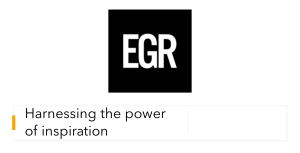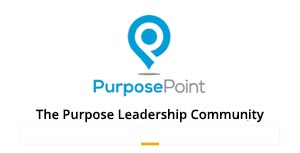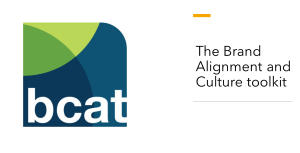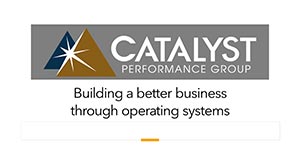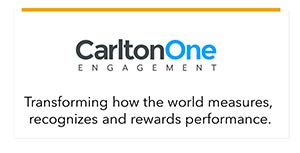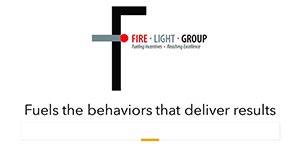Jack Phillips, ROI Institute Chair: Marketing ROI Rates 4 Out of 10
 Special offer from ROI Institute: the first 25 viewers/readers who email bolger@theeea.org with his/her address will receive a free copy of Phillips’ book on Marketing ROI.
Special offer from ROI Institute: the first 25 viewers/readers who email bolger@theeea.org with his/her address will receive a free copy of Phillips’ book on Marketing ROI. 1. The State of Measurement in Marketing Today: 4 out of 10
2. Phillips’ Framework for Measurement
3. What CEOs Think About Marketing Forecasts
4. Lessons Learned About Marketing Over the Years
Click here to subscribe to the ESM weekly e-newsletter.
This Enterprise Engagement Alliance (EEA) Stakeholder Management Forum show provides a framework for credible ROI marketing evaluation, addresses the shortcomings of current marketing practices, CEO perceptions of marketing, and the lessons learned over decades working with organizations seeking to show the value of their initiatives.
Click here to view or listen to the show, hosted by Bruce Bolger, founder of the EEA.
Is your organization confident in its marketing return-on-investment practices? If not, this short article and YouTube interview with marketing pioneer Jack Phillips, Founder and Chair of the Birmingham, AL-based ROI Institute, provides a quick way to benchmark effective practices.
Phillips highlights how a disciplined, people-centered approach to marketing creates stronger brands, more loyal customers, and more measurable business results. Key insights from Phillips: marketing must shift from random tactics to systematic, strategic management, and that relationship-building—not transactional selling—should anchor the discipline.
1. The State of Measurement in Marketing Today: 4 out of 10
Phillips argues that marketing measurement remains immature, even in major organizations. His observations include:
Marketing Is Often Disorderly and Ad Hoc
- Many marketing efforts range wildly—from giveaways to stadium naming—and are rarely tied to clear strategic purposes and ROI.
- Even sophisticated companies employ fragmented, fad-driven, or gimmick-oriented tactics.
- Data generated by agencies or internal groups is often siloed or never reaches the right people.
- Many marketers do not anchor activities in clear objectives or expected business outcomes.
- Few organizations forecast results credibly or follow up rigorously to compare forecasts with actual impact.
- Overall, Phillips would rate the discipline of marketing measurement around a 4 out of 10, even lower than other organizational functions he has assessed.
- Marketers often claim credit for sales that cannot credibly be attributed to their campaign.
- Many are reluctant to isolate causal factors, especially when multiple campaigns overlap.
- Phillips recounts executives who routinely “cut marketing’s projections in half” because the claims lack credibility.
2. Phillips’ Framework for Measurement
Phillips lays out a five-level outcome model used by the ROI Institute to evaluate any marketing campaign, often based on surveys, focus groups, or other follow-up analysis.
Level 1: Reaction
How the target audience responds:
- Was the message attractive?
- Did it capture attention?
- Was it relevant?
What the audience takes away:
- What did they learn about the brand, product, or offer?
- What perceptions about pricing, positioning, or benefits did they retain?
What actions they take:
- Do they request information, take a trial, interact with content, or engage in some behavioral step?
The business results:
- Sales
- New customers
- Other measurable performance outcomes, such as signing up for a newsletter or to become a social media follower
The financial return:
- Profit generated compared to the cost of the campaign.
Phillips underscores the importance of relationship-based outcomes such as:
- Trust
- Satisfaction
- Loyalty
- Collaboration
- Signing up to receive ongoing communications via social media or e-mail.
1. Clarifying purpose (“Start with Why”)
2. Setting clear objectives
3. Collecting the right data
4. Analyzing results conservatively
5. Reporting and using the findings for improvement
The framework is flexible, adapting to the campaign’s strategic purpose—brand building, demand generation, customer education, permission-database building, etc.
3. What CEOs Think About Marketing Forecasts
Phillips reports that:
CEOs are generally skeptical
- Many CEOs simply do not trust marketing forecasts.
- Some openly admit they cut projections in half because of repeated overstatement.
- Marketing often lacks credibility because it doesn’t isolate what portion of business results actually came from a given campaign.
- Only about 20–25% of companies Phillips encounters attempt credible ROI forecasting.
- Even fewer rigorously follow up to confirm whether the forecasted ROI actually occurred, a step Phillips considers essential.
Phillips identifies three ROI calculations marketers should manage:
1. Objective ROI – What is needed to justify the investment.
2. Forecasted ROI – What is reasonably expected.
3. Actual ROI – What truly occurred.
Forecast conservatively. The actual ROI should exceed the forecast; otherwise credibility erodes.
4. Lessons Learned About Marketing Over the Years
Phillips closes with clear, practical wisdom distilled from decades of evaluation work:
You must measure success credibly. If you don’t measure, you won’t know:
- What is working
- What is not
- What needs to be fixed
Adopt “ROI thinking” in everything. For every action—from a trade show to a logo on a mug—ask:
- How will customers react?
- What will they learn?
- What will they do?
- What is the expected impact?
- Will the value exceed the cost?
- Relationships, not campaigns, generate sustainable sales, especially in business to business.
- Unlike consumers, most businesses do not buy on whim or even on any given buying cycle. Employ tactics that ensure they know about you when in a buying mode.
- The ROI Institute's own company’s best revenue week ever—nearly $500K—came entirely from relationships and referrals, not ads or email: find ways to build relationships before people buy.
- Trust, relevance, and helpfulness are the foundation of effective marketing.
Relationship building:
- Takes time
- Cannot be rushed
- Depends on providing value rather than pressure.
Remove silos. Campaigns can fail when:
- Call centers aren't prepared
- Sales isn’t briefed
- Logistics can’t deliver
- Data is trapped in isolated systems
Enterprise Engagement Alliance Services
 Celebrating our 15th year, the Enterprise Engagement Alliance helps organizations enhance performance through:
Celebrating our 15th year, the Enterprise Engagement Alliance helps organizations enhance performance through:1. Information and marketing opportunities on stakeholder management and total rewards:
- ESM Weekly on stakeholder management since 2009. Click here to subscribe; click here for media kit.
- RRN Weekly on total rewards since 1996. Click here to subscribe; click here for media kit.
- EEA YouTube channel on enterprise engagement, human capital, and total rewards since 2020
 Management Academy to enhance future equity value for your organization.
Management Academy to enhance future equity value for your organization.3. Books on implementation: Enterprise Engagement for CEOs and Enterprise Engagement: The Roadmap.
4. Advisory services and research: Strategic guidance, learning and certification on stakeholder management, measurement, metrics, and corporate sustainability reporting.
5. Permission-based targeted business development to identify and build relationships with the people most likely to buy.
Contact: Bruce Bolger at TheICEE.org; 914-591-7600, ext. 230.






